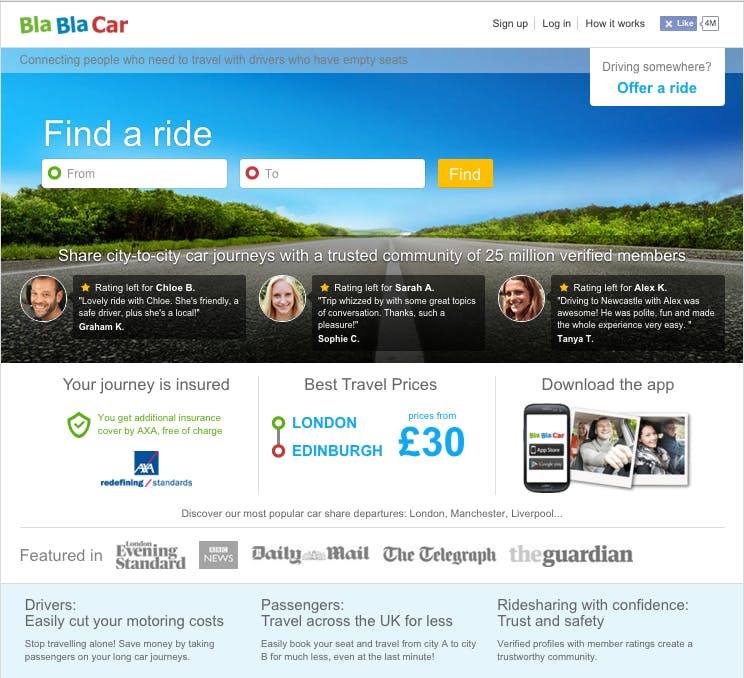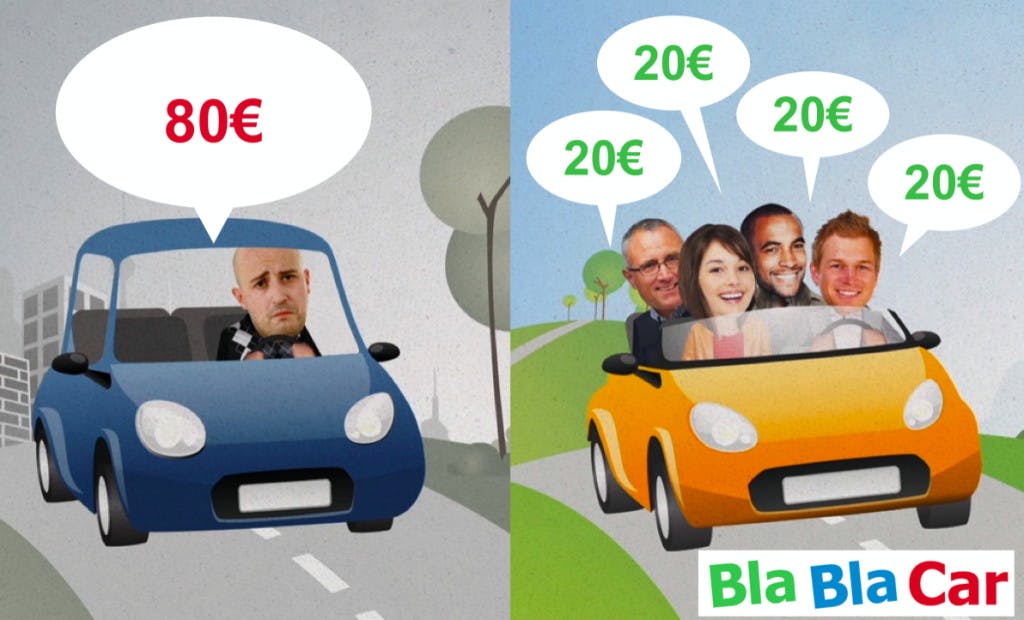How to communicate your marketplace value proposition
Making sure every visitor knows how your marketplace can help them.
Published on
Last updated on

In this chapter of the How to create a marketplace guide, we take a deep dive into communicating your marketplace value proposition. Also available as a podcast. Check out the marketplace marketing & growth articles library for more tips on finding your audience.
People's attention spans have become shorter. With the rapid growth in the number of online services vying for people's attention, if you do not make an impression on your users within seconds, they will abandon your platform.
When building your marketplace MVP, it is important to consider what kind of a first impression it gives to new users and how it communicates your core value proposition.
The unique two-sided nature of marketplaces poses additional communicational challenges. You are catering to two audiences in the same product: the customers and the providers, or in other words, your supply and demand. Many marketplace entrepreneurs have told me how they struggle to find the right communication strategies. Traditional advertising agencies have not been able to help them due to a lack of understanding of how marketplace businesses work.
As a founder, you should have a crystal clear picture of the value that you provide your users. You need to know who you are targeting and what kind of communication style and aesthetics they appreciate. This chapter will help you figure out the right way to communicate with your users.
Too often, I meet founders who don't choose the right words to communicate their value proposition to their users. They pitch me for 15 minutes without saying a word about the problem they are solving or what the main value proposition is. You need to take the time to simplify your message and prepare a clear pitch with the core elements of your value proposition. If you are not explaining your idea clearly, chances are it won't be understood.
There are several different approaches to crafting your value proposition. It is quite likely that your first choice will not be the best one. Your value proposition sentence is one of the first things you should A/B test as soon as you have enough traffic on your site.
It might be obvious, but still worth mentioning: different audiences need different messages and different styles of design. Just like you use a different message when pitching your company to an investor versus a potential co-founder, you often need different words when talking to your customers and your providers—even if some people could be both.
In the beginning, you should focus on the most important customer segment: your early adopter users. Launching an MVP means "selling the vision and delivering the minimum feature set to visionaries, not everyone". This group of visionaries is what Steve Blank calls the Earlyvangelists (early adopters + internal evangelists).
Drawing inspiration from the most successful marketplace businesses can be worthwhile. We are now going to take a look at two very popular marketplaces and how they communicate their value proposition to their target audience.
Popular ride-sharing service BlaBlaCar boasts more than 20 million users. They recently raised 200 million dollars in venture funding at $1.6 billion valuation. They facilitate rides for more than two million people every month. Let's take a look at their landing page.

You will immediately notice the main value proposition, "Find a ride". There's also a call to action right next to the main form: a "Find" button to see the available rides for the desired route.
This is a really simple value proposition for customers: an easy way to get from place A to place B. It seems that BlaBlaCar has identified that their method of user acquisition is to first get people to book a ride in someone else's car, and after that convince them to offer rides themselves. You can see the secondary, smaller call to action "Offer a ride" for providers in the top right corner of the page.
Under the main value proposition are three photos of BlaBlaCar users, along with their testimonials supporting the proposition. This is a typical "social proof" approach—people are more likely to believe their peers rather than the words of the company itself. The pictures also show that BlaBlaCar has identified their main target audience: younger people who want to save money while traveling and do not mind the social interaction with the driver and other passengers.
BlaBlaCar has separate landing pages for each country in which it operates. Each of these pages contains testimonials from local people, making it easier for new users to identify with them. Below the testimonials are additional value propositions. Finding a ride with BlaBlaCar is not only easy but will also save you money. Travelling is safe because of the provided insurance. BlaBlaCar makes these propositions explicit for both customers and providers: the providers (drivers) can "easily cut their motoring costs", while the customers (passengers) can "travel across their country for less".
In my classes, I often show the following picture by BlaBlaCar as an example of a very effective visual approach to representing the value proposition of their ridesharing service to both sides.

BlaBlaCar also uses more subtle things to communicate its additional value propositions. It uses a bright color scheme, with light green and blue as the main colors. This communicates its positive impact on the environment. The name of the brand itself and the playful logo communicate the positive social aspects of sharing a ride with strangers, something that works well with its youngish user segment. These design choices would not work for every marketplace. A marketplace that deals with money—like Lending Club—wants to appear as trustworthy as a bank, meaning calm blue and grey colors are justified.
While using BlaBlaCar, I have talked to multiple passengers who said they first used the service due to the expected economic value or convenience. However, after using it, the additional value propositions started becoming more important. Drivers and passengers keep using the platform because they enjoy the resulting conversations and can even form long-term friendships with other passengers. This social value is a key retention factor for BlaBlaCar, but they don't emphasize it in their core messaging. While it makes people return to the service, the value proposition that originally gets the users hooked is related to convenience, trust, and price.
Wallapop is another great example of clarity when communicating a marketplace value proposition. Their marketplace app lets users buy and sell items nearby. The idea is not very original, but their execution is brilliant. They are considered one of the most promising Spanish startups, and their most recent funding round in 2021 saw $191 million raised at an $840 million valuation.
When they launched, there were many other similar apps with comparable geolocation approaches. Why did they succeed? One of the key factors was its excellent niche marketing strategy.
Their first TV commercial, launched in April 2014 (see the video below), is a masterpiece of communicating the value proposition to a niche audience. At the time, they had thousands of users and enough resources to create any kind of commercial. They could have chosen to target the mainstream audience but instead focused on only one segment: the young and cool "hipsters". Why? Because they had identified that this segment was the most active in buying and selling second-hand products in offline marketplaces. Wallapop knew these people would be the perfect earlyvangelist segment for them. Instead of going directly to the mass market, they chose to first become really successful in one niche and then expand.
In the playful and cheeky video—which speaks the language and plays the music of its target audience—you notice three main value propositions:
- Geolocation: An easy way to find items nearby and ask around to get what you need.
- Economic value: The best deals to buy things their target audience love, like vintage glasses and bikes.
- Social value: Using Wallapop, you can meet your neighbors.
Let's use the familiar example from the previous articles: a marketplace for personal training services. For the providers, your core message is likely about getting more business. Meanwhile, for customers, you probably want to focus on the ease of finding the right trainer.
Since most of your users are customers, you figure that the most important function of your main landing page is customer acquisition. Providers are easier to acquire by hand. This means your main call to action should be directed towards your customers. In the case of personal trainers, you identified the most promising early segment as "wealthy stay-at-home moms between the age of 30 and 50". They don't care that much about saving money, but they do care about the quality of the service and saving time.
You could start with a big slogan like "Find the right trainer for you today" near the top of the page. Or you could drill down even deeper into the needs of your target users. Why do they want to find personal trainers? Because they want to get in shape. You could say something like, "The easiest way to get fit". After the slogan, it's a good idea to have a big call to action, just like in BlaBlaCar's case. The most logical approach is to ask your users to enter their location.
On the design side, in general, big images work really well. In this case, you could use a photo of a person who belongs to your target segment training at the gym, with the trainer giving her instructions. If you do not have a suitable photo available, many stock photo sites provide affordable quality photos and provide you with the ability to filter their collection of photos based on things like sex, ethnicity, and age to find one that matches your audience. I recommend using Stocksy.
As soon as you have the first users, you should add their stories in their own language. Ideally, their experiences match the story you want to tell your prospective customers.
Below the propositions to your customers, you can talk about the benefits for trainers: "Get new customers by advertising your services on our site for free!" You could also have a secondary call to action for trainers to sign up at the top of your page.
Another option to consider is to have a separate, secondary landing page for trainers. This lets you focus on explaining your value proposition to them in a clear, more direct way and also gives you an excellent place to point potential trainers to if you decide to target them with advertising.
In this article, we have discussed the impact of language and design on your ability to communicate your main value proposition and make a good first impression. This is a critical first step in making your users stay on your platform.
It is not enough to focus on the language and design of your landing page. You want to make sure that all the communications to your users—from support emails to error pages—have the same coherent language and style.
We are now going to shift our focus towards the design of your marketplace. By "design", we do not mean simply making your marketplace look pretty; as famously said by Steve Jobs: "Design is not just what it looks like and feels like. Design is how it works." We will dig deeper into practices that actually make your marketplace work for your users.
You might also like...

The marketplace search engine: How to help your customers find what they’re looking for
Your success depends on demand finding its way to supply. Here’s how to make it happen.

How to start with branding your marketplace
Use the brand strategy canvas to find your unique marketplace positioning.

Do one thing well – An interview with Mike Williams
The founder of Studiotime shares how he built a profitable marketplace business by bootstrapping.

Marketplace metrics: 26 key metrics and how to use them
What metrics should a marketplace founder track? And how to translate what you track into action? Here’s how to identify and track the key metrics, how to separate them from vanity metrics, and how to make concrete decisions based on reliable data.
Start your 14-day free trial
Create a marketplace today!
- Launch quickly, without coding
- Extend infinitely
- Scale to any size
No credit card required
